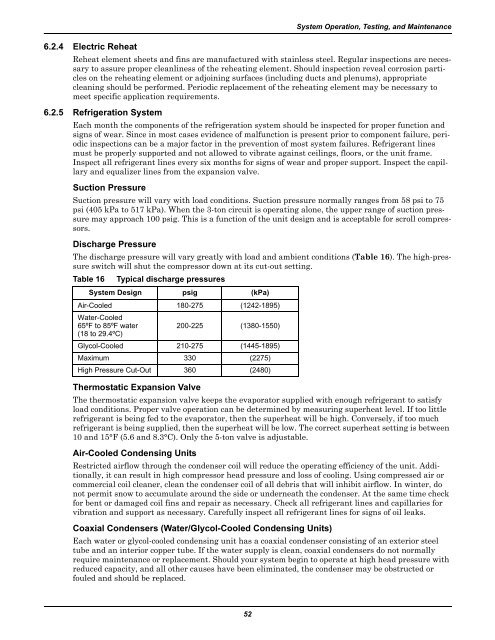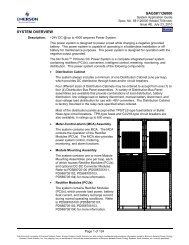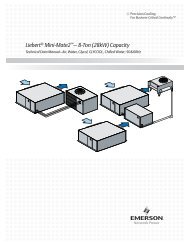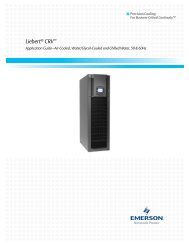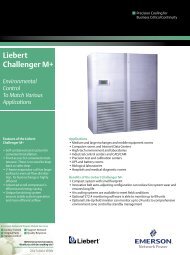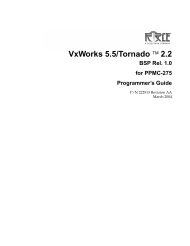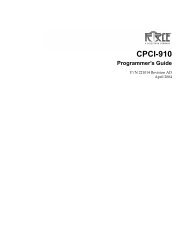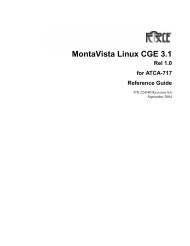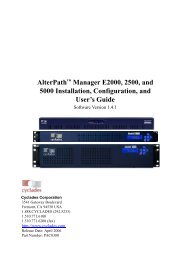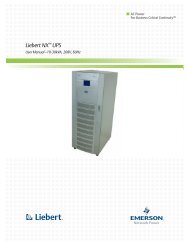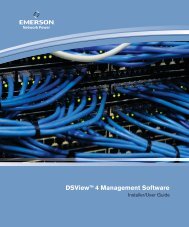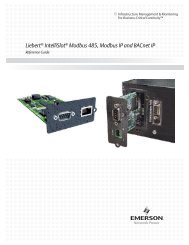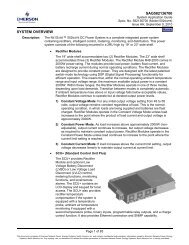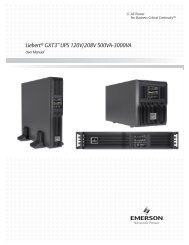Liebert Mini-Mate2, 8 Ton - Emerson Network Power
Liebert Mini-Mate2, 8 Ton - Emerson Network Power
Liebert Mini-Mate2, 8 Ton - Emerson Network Power
Create successful ePaper yourself
Turn your PDF publications into a flip-book with our unique Google optimized e-Paper software.
6.2.4 Electric Reheat<br />
52<br />
System Operation, Testing, and Maintenance<br />
Reheat element sheets and fins are manufactured with stainless steel. Regular inspections are necessary<br />
to assure proper cleanliness of the reheating element. Should inspection reveal corrosion particles<br />
on the reheating element or adjoining surfaces (including ducts and plenums), appropriate<br />
cleaning should be performed. Periodic replacement of the reheating element may be necessary to<br />
meet specific application requirements.<br />
6.2.5 Refrigeration System<br />
Each month the components of the refrigeration system should be inspected for proper function and<br />
signs of wear. Since in most cases evidence of malfunction is present prior to component failure, periodic<br />
inspections can be a major factor in the prevention of most system failures. Refrigerant lines<br />
must be properly supported and not allowed to vibrate against ceilings, floors, or the unit frame.<br />
Inspect all refrigerant lines every six months for signs of wear and proper support. Inspect the capillary<br />
and equalizer lines from the expansion valve.<br />
Suction Pressure<br />
Suction pressure will vary with load conditions. Suction pressure normally ranges from 58 psi to 75<br />
psi (405 kPa to 517 kPa). When the 3-ton circuit is operating alone, the upper range of suction pressure<br />
may approach 100 psig. This is a function of the unit design and is acceptable for scroll compressors.<br />
Discharge Pressure<br />
The discharge pressure will vary greatly with load and ambient conditions (Table 16). The high-pressure<br />
switch will shut the compressor down at its cut-out setting.<br />
Table 16 Typical discharge pressures<br />
System Design psig (kPa)<br />
Air-Cooled 180-275 (1242-1895)<br />
Water-Cooled<br />
65ºF to 85ºF water<br />
(18 to 29.4ºC)<br />
200-225 (1380-1550)<br />
Glycol-Cooled 210-275 (1445-1895)<br />
Maximum 330 (2275)<br />
High Pressure Cut-Out 360 (2480)<br />
Thermostatic Expansion Valve<br />
The thermostatic expansion valve keeps the evaporator supplied with enough refrigerant to satisfy<br />
load conditions. Proper valve operation can be determined by measuring superheat level. If too little<br />
refrigerant is being fed to the evaporator, then the superheat will be high. Conversely, if too much<br />
refrigerant is being supplied, then the superheat will be low. The correct superheat setting is between<br />
10 and 15°F (5.6 and 8.3°C). Only the 5-ton valve is adjustable.<br />
Air-Cooled Condensing Units<br />
Restricted airflow through the condenser coil will reduce the operating efficiency of the unit. Additionally,<br />
it can result in high compressor head pressure and loss of cooling. Using compressed air or<br />
commercial coil cleaner, clean the condenser coil of all debris that will inhibit airflow. In winter, do<br />
not permit snow to accumulate around the side or underneath the condenser. At the same time check<br />
for bent or damaged coil fins and repair as necessary. Check all refrigerant lines and capillaries for<br />
vibration and support as necessary. Carefully inspect all refrigerant lines for signs of oil leaks.<br />
Coaxial Condensers (Water/Glycol-Cooled Condensing Units)<br />
Each water or glycol-cooled condensing unit has a coaxial condenser consisting of an exterior steel<br />
tube and an interior copper tube. If the water supply is clean, coaxial condensers do not normally<br />
require maintenance or replacement. Should your system begin to operate at high head pressure with<br />
reduced capacity, and all other causes have been eliminated, the condenser may be obstructed or<br />
fouled and should be replaced.


